Concurrent Sessions IV | April 30 | 9:30 – 11:00 AM
Session 4.1 (MOVED TO SESSION 8.4 ON WEDNESDAY)
NEPA | Seven County Infrastructure: A Journey to the Supreme Court
View new session placement!
Session 4.2 A
Transportation | SCDOT Environmental Compliance – Ensuring Environmental Commitment Adherence During Construction
9:30 AM – 10:30 AM
| About the Presentation |
|
For the South Carolina Department of Transportation (SCDOT) Environmental Services Office (ESO), environmental planning doesn’t stop at construction let. As most environmental planners know, establishing environmental commitments and conditions is an integral part of the National Environmental Policy Act (NEPA) and permitting processes. Impact avoidance and mitigation efforts during the NEPA and permitting phases often establish commitments such as those related to the Endangered Species Act (ESA), the National Historic Preservation Act (NHPA), the Magnuson - Stevens Fishery Conservation and Management Act, Migratory Bird Treaty Act (MBTA), Clean Water Act (CWA) permitting, and those related to United States Coast Guard (USCG) and state navigability permitting. However, ensuring that contractors adhere to the established conditions can be much more challenging.
In sync with SCDOT’s long-standing commitment to minimize the impact of transportation infrastructure on the natural and human environment while promoting sustainable development, SCDOT recognized the need for a more comprehensive and methodical approach to ensuring environmental compliance during the construction phase. This led to the establishment of the SCDOT Environmental Construction Compliance (ECC) program in the early 2000’s, which was designed to ensure that all construction activities carried out by the contractor complied with federal and state environmental regulations as well as NEPA commitments, permitting conditions, and pre-construction impact mitigation efforts. The ECC program not only established continuous commitment monitoring and reporting during construction, but it reduced many of the previous compliance challenges by increasing communication and transparency between the SCDOT resident construction engineers (RCEs), SCDOT ECC inspectors, contractors, and regulatory agencies. The core components of the ECC program are pre-construction coordination with the contractor, regular project inspections, detailed reporting of non-compliant items, and escalation procedures if corrective actions are not taken by the contractor in a timely manner.
Soon after the inception of the ECC program, SCDOT experienced a drastic decrease in CWA permitting violations and unplanned compensatory mitigation needs. Over the years SCDOT has continued to refine its ECC program with continuous improvements that have leveraged lessons learned from past projects and by adopting innovative solutions and advancement in technology that can provide real-time compliance data for construction projects. This new data dashboard allows SCDOT ECC staff to easily track the compliance status and monitor active violations for dozens of active projects across the state while increasing transparency and building firmer relationships with regulatory agencies.
This session will present the SCDOT ECC program, the challenges, successes, innovations, and how they’ve expanded the relationship with regulatory agencies that are ultimately responsible for the NEPA and permitting commitments bound to SCDOT infrastructure projects
|
| About the Speaker(s) |
|
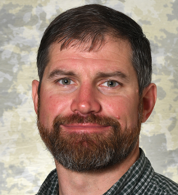
|
Chris Neely
Environmental Compliance Manager
SCDOT
Chris Neely is an Environmental Compliance Manager for the SCDOT Environmental Services Office. In this role, he oversees the environmental compliance efforts for transportation projects across the state, ensuring that projects adhere to federal and state environmental regulations during construction. Chris’ responsibilities include managing consultants, conducting routine compliance inspections, and coordinating with SCDOT resident construction engineers (RCEs), contractors, and regulatory agencies. Chris has been instrumental in helping to advance the department’s environmental compliance initiatives and promoting a healthy balance between the natural and human environment and infrastructure development.
|
|

|
Ed Smail
Senior Environmental Specialist
Michael Baker International
Ed Smail is a Senior Environmental Specialist and Project Manager at Michael Baker International. He has over 19 years of experience leading wetland delineations, protected species surveys, Clean Water Act Section 404/401 permitting, and has served as principal author on surface transportation and aviation NEPA documents. On behalf of SCDOT, Ed currently serves as the lead environmental compliance inspector for SCDOT’s Districts 1 and 2.
|
|
|
Lee Williams
Environmental & Planning Manager
Michael Baker International
Lee Williams serves as the Environmental & Planning Manager at Michael Baker International. He has over 19 years of environmental consulting experience with federal, state, and local government agencies as well as private developers. During his career, he has been actively engaged in environmental compliance for both federal and non-federally funded projects. He has served as project manager or environmental task lead on numerous projects including leading NEPA documentation, Clean Water Act Section 404/401 permitting, environmental construction compliance, and special studies including biological/ecological assessments, GIS analysis, compensatory mitigation monitoring, and public involvement.
|
Session 4.2 B
Transportation | I-26: How SCDOT is Handling the "Problem" With Bats
10:30 AM – 11:00 AM
| About the Presentation |
|
During a state-wide culvert inventory, South Carolina Department of Natural Resources (SCDNR) discovered tricolored bats (Perimyotis subflavus) roosting in several culverts along the Interstate-26 (I-26) corridor. In anticipation of widening the interstate and potentially impacting the bat habitat, South Carolina Department of Transportation (SCDOT) contracted Stantec to help them gain a better understanding of how bats were using the culverts. Surveys were conducted between August 2022 and May 2024. During each survey, biologists entered the culvert and conducted point-count surveys. The greatest number of tricolored bats were observed during the December and January surveys, and these bats were observed in a state of torpor, indicating these culverts were being utilized as hibernacula. The fewest number of observed tricolored bats occurred during the summer surveys. According to observations, it is likely that male tricolored bats use these culverts year-round. The cumulative impacts to the tricolored bat resulting from the temporary removal, replacement, and repair of the roadway culverts are expected to be adverse during the construction period. The Biological Assessment, prepared for and submitted by SCDOT, addresses the proposed actions in compliance with Section 7(c) of the Endangered Species Act (ESA) of 1973, as amended. An exclusion plan, a conservation-management activity that denies bats entry to the culverts while maintenance or construction activities are occurring, was prepared for use during construction. Minimization efforts include installation of bat roost exclusionary devices or screen mesh “curtain” panels on all culverts to prevent injury or harm to the tricolored bat before construction begins. In addition, SCDOT proposes to enhance roosting and hibernacula habitat within the culverts by applying “roughened concrete” along the ceiling and walls of the new and extended culverts.
Learning Objectives
This session will present how SCDOT is handling a growing concern affecting several state DOT's. Every project is different and telling the story of this one specific project is intended to provoke thought on ways to remedy bat issues acceptable to regulatory agencies.
|
| About the Speaker(s) |
|
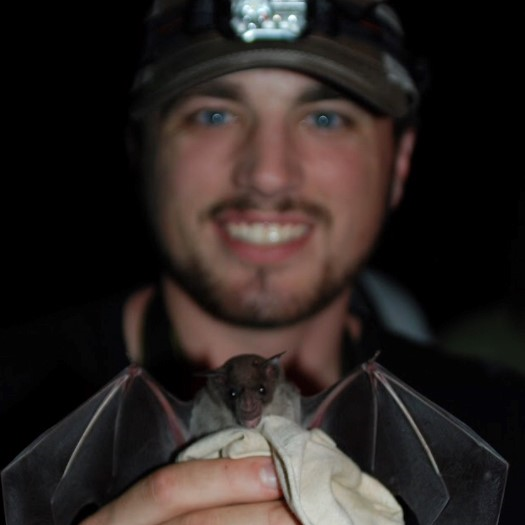
|
Trevor Walker
Wildlife Biologist/ Environmental Scientist
Stantec Consulting Services Inc.
Trevor is a wildlife biologist and environmental scientist with a diverse background in ecological studies. He has a Master of Science in Biology from Austin Peay State University, a Bachelor’s of Science in Wildlife, Fisheries, and Conservation Biology from N.C. State University, and an Associates of Applied Science in Fisheries and Wildlife Management Technology from Haywood Community College. Trevor has worked specializing in bats for 7 years conducting mist net surveys, hibernacula surveys, culvert surveys, and swabbing of bats to detect White-nose syndrome for federal, state, and private agencies. He also has experience in state level surveys for threatened and endangered amphibians, reptiles, birds, mussels, and insects in multiple states in the eastern U.S. Furthermore, he is certified in Genus level identification of mayflies, stoneflies, and caddisflies in the Southeastern U.S. Trevor has worked with Stantec for 2 years and looks to continue work specializing in threatened and endangered species.
|
|
|
Amanda Voges, PWS, CEPSCI
Environmental Scientist
Stantec Consulting Services Inc.
Amanda has a Bachelor of Science in Natural Resources Management and a Master of Science in Environmental Studies. She has been working with Stantec as an Environmental Scientist for over 6 years but overall has been in the environmental field for almost 10 years. She has a strong background in wetland delineations, protected species surveys, federal and state permitting, and environmental compliance.
|
Session 4.3 A
Brownfields and Remediation | PFAS Legislative Updates and Impacts to the Regulated Community
9:30 AM – 10:00 AM
| About the Presentation |
|
There has been a flurry of regulatory initiatives surrounding the management of PFAS. in 2024 alone, the Toxic Release Inventory was updated, our National Drinking Water Standards now include 6 PFAS compounds. There is now a PFAS Reportable quantity (RQ). Superfund has added 9 PFAS to the Hazardous Substances List, an NPDES PFAS "hit List" has been established and there is a PFAS data collection rule for POTWs. RCRA regulation will also be passed by the time of the 2025 conference. Commercial and industrial owners/operators who become aware of "releases" of PFAS on their property are likely to have reporting obligations to the federal government. EPA and State regulators now have the authority to issue directives to assess and possibly clean up PFAS-impacted properties. The DOT will now be required to manage and label PFAS-related materials for packaging and transport.
Many voluntary cleanup programs require pre-notification of contaminants encountered that will no doubt include PFAS. Because groundwater is treated as drinking water, there could be reports during Phase II assessments submitted to regulatory authorities, possibly triggering requests for treatment prior to use. POTW analysis of wastewater discharge and, more importantly, biomass will identify PFAS requiring reporting and management. NPDES Stormwater MS4 analysis (especially sediment) will require reporting and management. New Superfund sites may be added, and those that are closed could be re-opened. Quick self-directed cleanups that employ "dig and haul" of soils could be impacted. Worst yet, no chemical or biological technology is currently available in situ that can break down these compounds into their elemental components. All of these issues and more will be addressed
Learning Objectives
- Regulatory Update
- Standards Review
- Financial and Technical Challenges
|
| About the Speaker(s) |
|
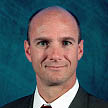
|
Nicholas Albergo, P.E., DEE, F. ASCE, D. WRE, F. EWRI
Senior Advisor
GHD SERVICES LIMITED
Nick Albergo is a Senior Advisor to GHD and was the founder and CEO of HSA Engineers & Scientists, a Florida-based engineering consulting firm that he successfully grew to more than 400 professionals. The firm was sold to GHD in 2013. He is an adjunct professor at the University of South Florida Department of Civil and Environmental Engineering. He has had a distinguished career as an inventor and as the author of over 185 professional publications. He has been working within the fields of environmental and water resources engineering for over 35 years. More specifically, he has developed a multidisciplinary emerging contaminants practice with a worldwide reputation for providing insight, advocacy, and remedies to government, public, and private clients.
|
Session 4.3 B
Brownfields and Remediation | Cancelled
10:00 AM – 10:30 AM
| About the Presentation |
|
|
| About the Speaker(s) |
Session 4.3 C
Brownfields and Remediation | Lions, Tigers, and Chicken Fat? Oh My!
10:30 AM – 11:00 AM
| About the Presentation |
| Almost all remediation projects present unique scenarios, but it is not often that a unique contaminant of concern is encountered. When chicken grease threatened to pollute a local stream, the Georgia EPD had to step in and put the site into the HSRA program. This session will go through what led to such terrible site conditions, the remedial approaches taken, challenges encountered, and lessons learned from having to deal with such a fowl facility. You'll never look at a batch of chicken grease the same again. |
| About the Speaker(s) |
|

|
Austin Brenller, PE
Project Manager
KEMRON Environmental Services
Speaker Bio Coming Soon
|
Session 4.4 A
Biological Resources | AI and Drones for Evaluation of Nature-based Solutions and USACE Permit Compliance
9:30 AM – 10:00 AM
| About the Presentation |
|
The use of drones, high resolution satellites, automation, and machine learning are revolutionizing our ability to collect and analyze robust digital datasets. These tools are rapidly transforming the scale and efficiency of digital data collection and facilitating the development of comprehensive environmental solutions. Drone- and satellite-based sensors such as multispectral or hyperspectral can detect what the human eye cannot and provide meaningful data on environmental conditions. This digital data collection generates gigabytes and terabytes of information at resolutions down to square inches but how do we best manage this information. The value of the resolution can easily become weighed down by the size of the datasets. Therefore, automation and machine learning are key to unlocking these large datasets.
Case Study: Coastal Infrastructure Resiliency Nature-based Solutions Monitoring Leveraging nature-based solutions to protect critical infrastructure is vital to having a resilient community. Evaluating and monitoring the success and challenges of these projects will help inform future projects to better prepare for increases in sea level rise and severe storm events. CDM Smith used drone-mounted multispectral drones and machine learning to monitor a living shoreline adjacent to bridge spanning a tidal salt marsh. This included developing digital datasets to track changes in site topography, shoreline position, vegetative health, and biomass. Drone-derived digital elevation data was used to assess contractor performance and facilitate adaptive management to ensure project success. The data was also used for compliance with the USACE 404 permit.
Learning Objectives
- Basic remote sensors for drones that capture relevant environmental data
- How machine learning models are applied for environmental characterization and evaluation
- How AI and drones can be leveraged to evaluate vegetative cover, biomass, and species in support of USACE permit compliance and mitigation monitoring
|
| About the Speaker(s) |
|
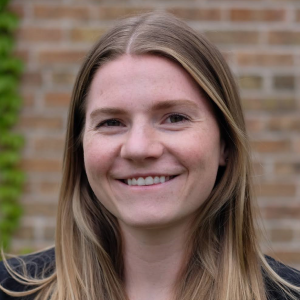
|
Amy Kopale
GIS and Remote Sensing Specialist
CDM Smith
Amy is a GIS and remote sensing specialist at CDM Smith with experience in geospatial analysis and modeling. Her project work often involves leveraging open source and commercial data to better understand and solve human-environmental problems. She is experienced in remote sensing principles and applications, with expertise in leveraging optical remote sensing data and machine learning for environmental analysis.
|
Session 4.4 B
Biological Resources | A New View of Wetlands, Leveraging Lidar and Artificial Intelligence
10:00 AM – 10:30 AM
| About the Presentation |
|
The promise of AI is starting to be seen with the advent and availability of large language models. Transferring the promise of these applications for environmental analyses faces a host of additional challenges including lack of accessible data, inconsistent data collection and documentation, scaling geographies and resolutions, and inserting model predictions into existing workflows. This presentation will discuss the deep learning model for wetlands predictions created by Sky Wave at CDM Smith, how CDM Smith has incorporated these predictions into existing processes for conducting wetland delineations, and how these model results can be used to ensure impacts to the natural and human environment are avoided, minimized, or mitigated.
Combing high-resolution spatial datasets and leveraging machine learning allows for rapid wetland identification and quantification in a repeatable manner, which allows for the tracking of changes over time. Sky Wave at CDM Smith created a deep learning model to delineate wetland boundaries using lidar and publicly available multispectral National Agricultural Imagery Program (NAIP) data for projects across multiple geographies and ecosystem types. CDM Smith utilized several approaches to train the model on site-specific data to save time while increasing accuracy. The model has been trained based on site specific delineations, neighboring desktop delineations, and national wetland inventory (NWI) data based on best available data. No matter the training source, model results have proven to be a valuable resource in existing wetland delineation workflows. The machine learning model is robust enough to maintain the same architecture across all geographies it has been applied to and has also shown promise for broad scalability across multiple states with similar ecosystem types.
The machine learning model predictions provide a variety of benefits ranging from identification, assessment, and planning. The SC Department of Transportation (SCDOT), through partnership with Sky Wave at CDM Smith, are evaluating options and opportunities to enhance existing wetland forecasting tools to better define future mitigation needs. Through improved remote analysis of wetlands, SCDOT can more accurately identify wetlands that may be impacted by future projects. This knowledge contributes to more accurate wetland mitigation forecasts, cost scheduling and identifies risks to project delivery in areas where mitigation is less available.
|
| About the Speaker(s) |
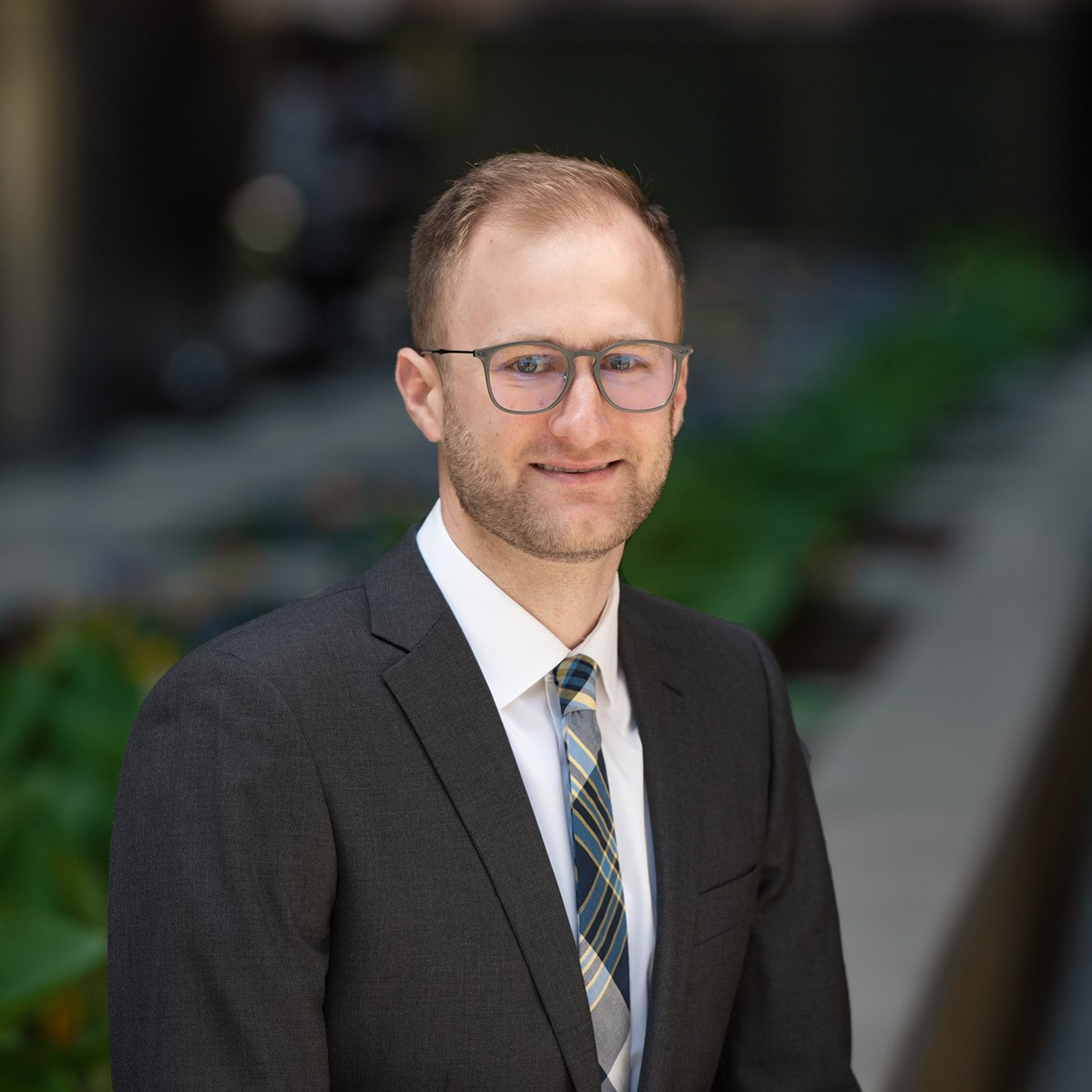 |
Andrew Reicks. GISP, CFM
Senior Data Science Specialist
Sky Wave at CDM Smith
Andrew Reicks is a Certified GIS Professional and Floodplain Manager with over nine years of experience as a geospatial data scientist. He leads Sky Wave's remote sensing and machine learning applications. He has created custom machine learning/deep learning models leveraging lidar, multispectral, and hyperspectral data. Andrew has a bachelor's degree from The University of Iowa and a masters in GIS from the University of Minnesota. He is also an FAA licensed part 107 drone pilot.
|
|